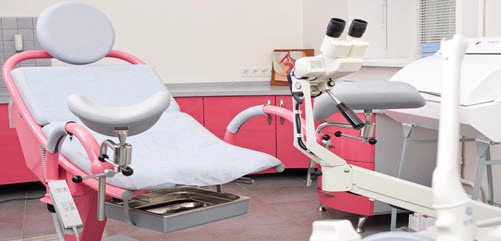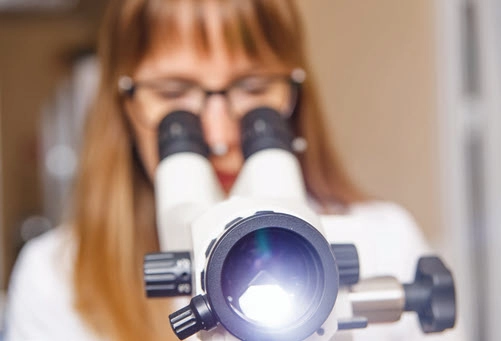Ob-Gyn Coding Alert
Capturing Additional Procedures is Key for Determining Correct Colposcopy Codes
Pull out key phrases to ensure you’re selecting the most accurate choice.
Your colposcopy coding choices are numerous, and so are the chances of picking the wrong code, which could cost you money. Take this challenge and see if you pick the proper CPT® and ICD-10-CM code in each instance.
Clue: Zoom in on what your ob-gyn did in addition to the colposcope — biopsy, endocervical curettage, or loop electrocautery excision procedure (LEEP)?

Scenario 1: Highlight These 3 Important Phrases
You receive an encounter note, where your ob-gyn states: “I cleansed the cervix, including upper/adjacent vagina, several times with 3 percent acetic acid. After adequate time for the acetic acid effect, I examined the cervix and vaginal fornices with a colposcope at several magnifications. I looked at the transformation zone completely.
“I noted an abnormality consisting of leukoplakia, mosaicism, punctuation, or atypical vessels during the exam. At noon, the patient had abnormal acetowhite areas extending into the endocervical canal, and I took a cervical biopsy. I treated the biopsy site with Monsel’s solution or silver nitrate for hemostasis.”
What CPT® and ICD-10 codes should you report in this situation?
Solution 1: First, you should isolate the important information. According to Peggy Stilley, CPC, CPB, CPMA, CPC-I, COBGC, presenter of “Gynecology in the Office” at this 2021’s Charleston Regional AAPC Conference, critical phrases are:
- “including upper/adjacent vagina”
- “transformation zone completely”
- cervical biopsy at noon
CPT®: Narrow down your coding options. From the first phrase, you know to look at the codes that “describe the inspection of the cervix with upper/ adjacent vagina,” Stilley says.
Therefore, your options are 57454 (Colposcopy of the cervix including upper/ adjacent vagina; with biopsy[s] of the cervix and endocervical curettage), 57455 (... with biopsy[s] of the cervix), 57456 (... with endocervical curettage), 57460 (… with loop electrode biopsy(s) of the cervix), or 57461 (… with loop electrode conization of the cervix). “Your decision depends on the additional procedure the ob-gyn does, whether it is a biopsy, endocervical curettage (ECC), LEEP excision, and so on,” Stilley says.
In this case, the ob-gyn performed only a biopsy, hence the third phrase: “cervical biopsy at noon.” However, you still don’t have enough information because this note does not specify what equipment the ob-gyn used to obtain the biopsy – a scalpel or punch biopsy tool or an electrical wire loop. If the former, you should report 57455 for this procedure; if the latter, 57460 would be the correct code.
Note: The difference between a LEEP biopsy and a LEEP cone is that in a biopsy the ob-gyn takes only the transformation zone, but with a LEEP cone, she takes the transformation zone plus the endocervix.
ICD-10: Although you also need more information to choose your ICD-10 diagnosis code appropriately (because you must always base it on the physician’s documentation), here are the likely codes: R87.610-R87.611 (Atypical squamous cells …), R87.615 (Unsatisfactory cytologic smear of cervix), R87.810 (Cervical high risk human papillomavirus (HPV) DNA test positive), R87.811 (Vaginal high risk human papillomavirus (HPV) DNA test positive), or R87.820 (Cervical low risk human papillomavirus (HPV) DNA test positive). In other words, you must know what Pap results from a previous encounter determined the need for the colposcopy.

Scenario 2: Keep Similarities With First Procedure in Mind
Your ob-gyn’s documentation states: “I cleansed the cervix, including upper/adjacent vagina, several times with 3 percent acetic acid. After adequate time for the acetic acid effect, I examined the cervix and vaginal fornices with a colposcope at several magnifications. I looked at the transformation zone completely. I noted abnormal acetowhite areas at noon, extending into the endocervical canal.
“I performed an endocervical curettage and cervical biopsy. I treated the biopsy site with Monsel’s solution or silver nitrate for hemostasis.”
What CPT® and ICD-10 codes should you report in this situation?
Solution: Again, Stilley says, you should isolate the key phrases. Those phrases are:
- “including upper/adjacent vagina”
- “transformation zone completely”
- “an endocervical curettage and cervical biopsy”
CPT®: The phrase “including upper/adjacent vagina” tells isolates the colposcope codes you need to use. Because the ob-gyn performed an endocervical curettage and cervical biopsy in addition to the colposcope, you have two coding options depending on the instrument the ob-gyn uses to obtain the biopsy: 57454, if it was the standard biopsy, or 57460, 57456-51 if the ob-gyn used an electrical wire. You don’t have any bundling edits for 57460 and 57456. You should list 57460 first because it has a higher relative value unit (RVU) than 57456.
ICD-10: Again, although you need more information to choose the ICD-10 code appropriately (because you must always base it on your physician’s documentation), the likely codes are R87.610-R87.611 (Atypical squamous cells …), R87.615 (Unsatisfactory cytologic smear of cervix), R87.810 (Cervical high risk human papillomavirus (HPV) DNA test positive), R87.811 (Vaginal high risk human papillomavirus (HPV) DNA test positive), or R87.820 (Cervical low risk human papillomavirus (HPV) DNA test positive).
Scenario 3: Here’s Where LEEP Enters the Picture
Your ob-gyn’s documentation states: “I cleansed the cervix, including upper/adjacent vagina, several times with 3 percent acetic acid. After adequate time for the acetic acid effect, I examined the cervix and vaginal fornices with a colposcope at several magnifications. I determined the size of the lesion.
“I infiltrated the cervix from 11-12 a.m. with lidocaine. I used an appropriate-sized loop electrode to ensure excision of the lesion on the ectocervix with adequate margins. I used a second loop to remove the involved portion of the endocervix. At the conclusion of the excision, I used a curette to sample the upper boundary of the excision to ensure complete removal of the dysplasia. I achieved homeostasis with electrocautery and topical Monsel’s solution.”
What CPT® and ICD-10 codes should you report in this situation?
Solution 3: Again, you should highlight the key phrases, which, in this case, are:
- “including upper/adjacent vagina”
- “determined the size of the lesion”
- “excision of the lesion on the ectocervix with adequate margins”
- “used a second loop to remove the involved portion of the endocervix”
- “at the conclusion of the excision, I used a curette”
CPT®: These phrases direct you to use 57461 rather than 57460 because the ob-gyn removed part of the endocervix. This code includes a LEEP conization, which is appropriate because the ob-gyn removed part of the endocervix.
ICD-10: Again, although you need more information to choose the ICD-10 code appropriately (because you must always base it on what is on the patient report), probable codes include R87.610-R87.611 (Atypical squamous cells …), R87.615 (Unsatisfactory cytologic smear of cervix), R87.810 (Cervical high risk human papillomavirus (HPV) DNA test positive), R87.811 (Vaginal high risk human papillomavirus (HPV) DNA test positive), or R87.820 (Cervical low risk human papillomavirus (HPV) DNA test positive).
Related Articles
Ob-Gyn Coding Alert
- Gynecology:
Capturing Additional Procedures is Key for Determining Correct Colposcopy Codes
Pull out key phrases to ensure you’re selecting the most accurate choice. Your colposcopy coding [...] - Coding Quiz:
Are You a Consult Coding Whiz? Find Out.
Find out when to apply modifier AI. You know Medicare won’t reimburse consultation codes, but [...] - ICD-10-CM:
Bust 4 Myths to Distinguish Aftercare from Follow-Up Encounters
You may face a denial if you try to report aftercare with a monitoring code. [...] - Coding Quiz Answers:
Check Your Consult, E/M Coding Skills With These Quiz Answers
Hint: Only look to unlisted E/M codes when your MAC specifically tells you to. How [...] - You Be the Coder:
Repeat C-Section With Pelvic Adhesions
Question: How would I code for a repeat global c-section, T incision on uterus? I [...] - Reader Questions:
Question Whether Ob-Gyn Excised Ovarian Tissue
Question: I am hoping to get some advice coding this surgery. The ob-gyn performed laparotomy, [...] - Reader Questions:
Back Off Billing for Telephone Triage
Question: We have been getting calls from patients who have tested positive for COVID-19 and [...] - Reader Questions:
Get a Grip on Medicare’s G Modifiers
Question: Can you explain the difference between the four G modifiers required for use when [...]




